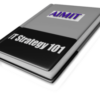Introduction
Your content is insightful, but is it generating actual business?
If you’re a consultant, this question probably hits close to home. You invest hours—sometimes days or weeks—crafting detailed articles, engaging blogs, and polished presentations. Your goal? To build credibility, demonstrate expertise, and ultimately, attract new clients. Yet, despite your best efforts, you’re often left wondering why your content isn’t translating into tangible results.
Sound familiar?
You’re not alone. Many consultants face the same frustrations: articles with thousands of views but zero leads; presentations praised as “thought-provoking” but quickly forgotten; blog posts that spark conversation but fail to ignite new business relationships. It’s a paradox that many content creators grapple with daily—high visibility, low conversion.
This disconnect leads to inevitable questions: Is it the topic that’s missing the mark? Is the message too broad, or perhaps too niche? Are you failing to properly engage your audience, or are they simply not the right audience? Without concrete answers, consultants often drift into a cycle of endless experimentation or, worse, content fatigue—publishing for the sake of visibility without clear evidence of impact.
That’s where the concept of Thought Leadership ROI comes into play.
Thought Leadership ROI isn’t just another trendy business metric. It’s the critical measure of whether your investment in content—time, energy, and expertise—is actually paying off in tangible business outcomes. Simply put, it quantifies how effectively your published insights convert readers and audiences into leads, and ultimately, into paying clients.
Why does this matter so much? Because thought leadership isn’t merely a branding exercise. At its best, it’s a strategic business-building tool that drives trust, credibility, and client acquisition. But without a clear way to measure its effectiveness, you’re essentially flying blind, unsure whether your efforts are creating real momentum or simply adding noise in an already crowded marketplace.
When properly measured and managed, thought leadership content moves beyond generating superficial engagement. It becomes a catalyst for deeper connections with potential clients—demonstrating your unique value, addressing CIO pain points, and positioning your services as indispensable solutions. The ability to track, refine, and enhance your content strategy based on actual results is what transforms your thought leadership from merely insightful to powerfully profitable.
In the sections that follow, we’ll unpack how you can effectively measure the ROI of your articles, blogs, and presentations. We’ll also explore how the analytics and feedback loops provided by CIO Index can offer invaluable insights into exactly which topics, formats, and approaches resonate most strongly with CIOs. By the end, you’ll have a clear roadmap not just to publish compelling content, but to turn every insight into an opportunity, and every opportunity into meaningful, long-term client relationships.
Because at the end of the day, your thought leadership should be more than respected—it should be rewarded.
Understanding Thought Leadership ROI
At its core, Thought Leadership ROI measures the effectiveness and impact of your published content in driving meaningful business outcomes. But what exactly does that mean? Simply put, Thought Leadership ROI is the quantifiable evidence of your content’s ability to attract, engage, and convert your target audience into tangible business opportunities—leads, new clients, and ultimately revenue. To master it, you need clarity around what metrics truly matter and why.
When evaluating your content’s ROI, there are several key metrics you should always consider:
- Views:
Views provide a baseline measure of your content’s reach. They answer fundamental questions about visibility and initial audience interest. High views signal relevance or effective distribution, but they are just the starting point. Views alone rarely translate into direct business outcomes—yet low views may indicate problems with topic choice, content style, or promotion strategies. - Shares:
Shares signify deeper audience engagement. When a CIO finds your article valuable enough to share within their network, this significantly amplifies your content’s reach and credibility. Shares are particularly powerful because they inherently endorse your expertise, opening new doors to expanded audiences and potential business relationships. - Comments:
Comments reflect active participation and deeper engagement. Thought leadership thrives on dialogue; thus, comments become valuable indicators of how your content resonates emotionally and intellectually with your audience. Meaningful conversations in comments can pinpoint CIO pain points or interests you might have otherwise overlooked. - Lead Generation:
Leads represent one of the strongest signals of Thought Leadership ROI. A lead—whether through an inquiry, content download, webinar registration, or direct request for a consultation—moves your content from being informative to commercially effective. Effective thought leadership compels CIOs to take the next step, transforming passive readers into active business opportunities. - Client Conversion:
The ultimate measure of your content’s ROI is client conversion. Client conversion occurs when a generated lead becomes an actual paying client. Measuring how frequently and quickly your content converts readers into consulting engagements provides concrete evidence of your content’s strategic value. Tracking conversions helps clarify whether your thought leadership genuinely influences CIO buying decisions.
However, it’s essential to recognize that successful Thought Leadership ROI isn’t solely measured in hard numbers. It requires balancing quantitative metrics with qualitative impacts.
- Qualitative impacts—such as brand recognition, enhanced reputation, and credibility—are powerful yet often overlooked. For consultants, your personal brand and professional reputation often become your strongest differentiators in the competitive marketplace.
- Qualitative factors—though harder to measure directly—matter immensely. They can make your name synonymous with specific expertise, build trust with CIOs before you ever meet, and create the foundation for future engagements. In fact, qualitative strength often precedes quantitative outcomes: brand credibility gained today frequently drives measurable business results tomorrow.
Therefore, your goal should be to achieve a balanced perspective. Purely quantitative measurement risks undervaluing the intangible but highly influential brand credibility you establish through consistent, high-quality thought leadership. Conversely, overly qualitative evaluation without clear numerical outcomes makes it challenging to optimize your efforts strategically.
Effective thought leadership strategy, therefore, integrates both perspectives. It regularly assesses quantitative metrics—such as engagement levels, lead quality, and conversion rates—while keeping sight of qualitative achievements, like brand authority and industry recognition. Striking this balance allows you to remain agile, continually adjusting and refining your content strategy to deliver not only thought-provoking insights but also measurable business outcomes.
By understanding and systematically measuring Thought Leadership ROI, you position your content as more than a series of ideas or opinions. Instead, you turn each piece into a strategic asset that builds credibility, expands reach, fosters meaningful conversations, and ultimately, generates client deals.
Measuring Effectiveness of Published Content
Your thought leadership content can be insightful, engaging, even groundbreaking—but how do you really know if it’s effective? To translate your published articles, blogs, and presentations into tangible business opportunities, you need a clear framework to measure success. The truth is, publishing great content without assessing its impact is like driving without a map—you’ll go somewhere, but probably not where you intended. Let’s unpack the most critical metrics that consultants should monitor consistently to measure content effectiveness and optimize results.
Metrics to Monitor
1. Reader Engagement
Reader engagement is the initial and most visible indicator of your content’s relevance and resonance. It demonstrates whether your message captures attention, provokes thought, or sparks meaningful interactions. Key metrics to gauge reader engagement include:
- Time Spent on Content:
A higher average time spent indicates deeper audience involvement. If CIOs consistently spend several minutes reading your content, it’s a strong sign your topic and delivery are aligned with their interests. Conversely, very short session durations might indicate superficial skimming or misalignment between your content’s promise and actual value. - Bounce Rate:
Bounce rate—the percentage of visitors who leave your content after viewing just one page—is a critical measure. A high bounce rate often suggests issues with relevance, presentation, or clarity. Conversely, a lower bounce rate indicates your content effectively draws CIOs deeper into your broader insights, prompting them to explore more of your expertise. - Shares and Comments:
Sharing reflects not just interest but active endorsement. If CIOs or IT leaders share your content within their networks, it’s a clear indication that your insights are valued, relevant, and worth extending to others. Comments further amplify this engagement by signaling meaningful, active dialogue. Thought leadership thrives in conversation, and comments often reveal hidden insights, CIO pain points, or opportunities for deeper content development.
2. Lead Generation
Beyond engagement, effective thought leadership content strategically guides readers toward actionable next steps. Measuring lead generation is critical because it marks the transition from passive readership to active, potential client interaction. Metrics for tracking leads include:
- Form Submissions and Content Downloads:
If readers willingly exchange their contact information for your additional resources—such as guides, white papers, or webinars—it signals serious interest. These downloads represent qualified leads because the CIO or their teams have actively opted-in, demonstrating a clear intent to learn more about your expertise. - Direct Inquiries and Outreach:
Direct inquiries—including email responses, consultation requests, or phone calls—provide immediate evidence of content effectiveness. Such engagements reflect high intent and frequently indicate readiness to discuss potential consulting opportunities. Tracking these interactions allows you to assess precisely which content pieces drive the most valuable leads.
3. Client Conversion Rate
The ultimate metric for measuring your thought leadership’s ROI is client conversion. Conversions directly connect your content to your bottom line by measuring how successfully leads become paid consulting engagements. A high conversion rate validates your content strategy as an effective revenue generator, while a low rate signals a disconnect requiring strategic adjustment.
- Leads-to-Client Conversion:
Monitor the percentage of leads that evolve into actual contracts. Identify patterns around which types of content, topics, or formats drive the highest conversion rates. For example, you may find that highly detailed, practical guides convert better than theoretical or general articles. Understanding these patterns enables you to allocate your future efforts strategically. - Time-to-Conversion:
Measure the average time between initial engagement (reading your content, downloading a resource, or making an inquiry) and final client contract. Shorter timelines typically indicate compelling, persuasive content that addresses urgent CIO pain points effectively.
By systematically tracking reader engagement, lead generation, and client conversion metrics, you create a clear roadmap toward maximizing the effectiveness—and profitability—of your thought leadership content. Armed with these insights, you’ll consistently refine your approach, turning every published piece into a strategic step toward securing long-term client relationships.
Tools and Methods
Measuring the effectiveness of your thought leadership content requires more than intuition or anecdotal feedback—it demands reliable tools and structured methodologies. Fortunately, numerous digital solutions can help consultants accurately track engagement, measure conversions, and optimize content strategy. Here’s how to leverage the most valuable tools and methods to turn insights into client deals.
Analytics Platforms
1. Google Analytics
Arguably the most fundamental analytics tool, Google Analytics provides a wealth of information about how your content performs. Beyond basic page views, it reveals:
- Audience Behavior:
Identify how CIOs interact with your content—average reading time, bounce rates, and navigation paths—highlighting the relevance of your content and the quality of your audience’s experience. - Traffic Sources:
Understand precisely where readers come from—search engines, social media, newsletters, or direct referrals. This helps optimize promotional strategies to increase qualified traffic. - Conversion Tracking:
Set up Goals and Events within Google Analytics to track leads generated from forms, downloads, or inquiries. These measurable conversions directly tie content to tangible business outcomes.
2. Heat Mapping Tools (e.g., Hotjar, Crazy Egg)
Heat mapping tools visually depict how readers interact with your content, highlighting areas that attract the most attention or those frequently overlooked. Benefits include:
- Identifying Content Gaps:
Quickly see which sections of your articles or blogs draw attention and which ones readers skip, enabling you to refine your messaging strategically. - Optimizing CTAs:
Discover how readers respond to calls-to-action. Adjust placement, design, or messaging based on visual analytics to improve lead generation.
3. Social Analytics Platforms (e.g., LinkedIn Analytics, Hootsuite, Buffer)
Social media analytics provide deep insights into content performance beyond your website, measuring engagement such as shares, comments, and mentions across various platforms.
- Audience Sentiment and Interaction:
Gauge CIO interest levels through reactions, comments, and shares, revealing which content themes resonate most powerfully. - Timing and Format Optimization:
Understand the best times to post and identify formats—articles, visuals, videos—that achieve maximum visibility and engagement within CIO communities.
Feedback Surveys and Comment Analysis
Qualitative insights are equally critical in shaping a successful thought leadership strategy.
1. Feedback Surveys:
Proactively gathering CIO feedback through short surveys or polls can uncover hidden insights not immediately visible through standard analytics.
- Direct Insights:
Learn precisely what CIOs find valuable, what topics they’re eager to explore, and how your content could better align with their challenges or strategic goals. - Content Refinement:
Continuous feedback loops help you iterate and refine your approach, ensuring future content directly addresses CIO pain points.
2. Comment Analysis:
Comments and online interactions offer an informal yet valuable source of audience feedback. Regularly reviewing reader comments provides clarity around the emotional resonance and practical value of your content.
- Spotting Trends and Pain Points:
Identify recurring themes, questions, or concerns expressed by CIO readers, highlighting areas to explore in future content or presentations. - Building Authentic Engagement:
Responding thoughtfully to comments fosters trust, deepens relationships, and demonstrates your commitment to CIO needs, ultimately leading to stronger conversion opportunities.
CRM Systems to Track Lead-to-Client Journeys
A robust CRM (Customer Relationship Management) system provides essential tracking capabilities to directly link content engagement to business outcomes.
- Lead Tracking and Attribution:
Clearly track where each client lead originated, linking specific pieces of content to eventual consulting contracts. Tools such as Salesforce, HubSpot, or Zoho allow you to visualize and measure the entire customer journey. - Optimizing Follow-up Strategies:
Analyze lead-to-client conversion data, identifying which content types drive rapid conversion and which lead nurturing strategies produce the highest return on investment. - Personalization and Relationship Building:
CRM systems empower personalized outreach, allowing you to tailor communications based on the specific interests and engagement history of each CIO, increasing the likelihood of successful conversions.
Incorporating these analytical tools and methodologies creates a comprehensive measurement framework. Armed with accurate data, insightful qualitative feedback, and structured CRM insights, your thought leadership becomes a strategic lever that consistently translates engagement into valuable client relationships and sustainable business growth.
Leveraging CIO Index for Maximum ROI
Creating great content is only half the equation. To achieve maximum Thought Leadership ROI, consultants need insights—not guesses—about what truly resonates with CIO audiences. This is where CIO Index becomes an indispensable strategic partner. Its robust analytics and active community create a powerful feedback loop that allows you to pinpoint high-performing topics, formats, and content strategies that convert.
Analytics and Feedback Loop on CIO Index
1. Pinpointing High-Performing Topics and Formats
One of the biggest advantages of CIO Index analytics is the immediate visibility it provides into what CIOs find most compelling. The platform tracks and reports critical metrics such as page views, downloads, time spent on articles, and social interactions—all tailored specifically toward a CIO audience.
For example, if your article on AI-driven cybersecurity strategies generates significantly more downloads compared to one on general IT budgeting practices, you’ll immediately recognize where your audience’s priorities lie. This rapid insight enables you to quickly focus and refine your content strategy, doubling down on the topics CIOs value most.
Similarly, analytics can reveal preferred formats, such as concise guides, interactive checklists, comprehensive reports, or shorter, action-oriented blogs. This helps you tailor your delivery style precisely to CIO preferences, dramatically increasing the likelihood of deeper engagement and lead conversion.
2. Real-Time Feedback on Content Performance
Real-time analytics on CIO Index offer another strategic advantage: agility. Instead of waiting weeks or months to understand how your content performed, you’ll receive immediate data on what’s gaining traction among CIOs.
- Popular Downloads:
Instantly identify which resources CIOs are actively seeking. A popular download clearly signals specific CIO interests or urgent pain points, allowing you to rapidly expand on those topics or deliver deeper insights in subsequent content. - Most-Viewed Articles:
High traffic indicates relevance, topical urgency, or exceptional presentation quality. Conversely, lower engagement immediately signals the need to refine messaging, adjust topics, or even reconsider timing and relevance.
This immediacy is critical because it lets you quickly pivot your strategy. Consultants who leverage real-time feedback tend to significantly outperform those who rely solely on intuition or delayed metrics.
3. Using CIO Index Community Insights to Refine Your Content Strategy
Beyond pure numerical data, CIO Index’s active community offers a treasure trove of qualitative insights. Engaging directly with CIO comments, conversations, and feedback creates a deeper, nuanced understanding of the challenges, priorities, and emotional triggers of your audience.
- Direct Engagement and Dialogue:
Actively participating in community discussions can uncover hidden opportunities for future content. Comments and interactions often highlight CIO pain points, industry trends, or misconceptions that traditional analytics might overlook. - Identifying Emerging Themes:
Tracking community interactions allows consultants to anticipate emerging CIO interests before they become widely recognized, giving you an early mover advantage in shaping thought leadership content around these evolving trends. - Building Genuine Connections:
Leveraging community feedback not only sharpens your content strategy but also builds deeper, authentic relationships with CIOs. Personal engagement signals your genuine investment in addressing CIO challenges—leading to trust, loyalty, and higher client conversion rates.
In summary, leveraging CIO Index analytics and feedback loops transforms your content strategy from guesswork into precision marketing. By consistently analyzing high-performing topics, responding rapidly to real-time feedback, and actively engaging with CIO community insights, consultants can maximize the effectiveness—and profitability—of their thought leadership, converting visibility into sustained client relationships and measurable business outcomes.
Tailoring Content Based on CIO Preferences
Creating content without understanding CIO preferences is akin to throwing darts in the dark—you might occasionally hit the target, but consistency will elude you. To consistently attract CIO attention and convert interest into meaningful client relationships, consultants must proactively analyze CIO reading patterns. CIO Index provides precisely this clarity, illuminating what resonates most clearly with your target audience.
Analyzing CIO Reading Patterns: What Resonates Most?
CIOs are uniquely positioned—they seek strategic insights, actionable guidance, and content aligned closely with their immediate challenges. CIO Index analytics help consultants demystify CIO preferences by clearly highlighting patterns in content consumption. Key insights that consultants should seek from these analytics include:
- Topic Preferences:
CIO Index data frequently shows which themes are consistently top of mind—whether cybersecurity, digital transformation, cloud adoption, AI integration, or strategic governance. By identifying these patterns, you can precisely align your content to CIO priorities rather than guessing or relying on generic industry trends. - Preferred Formats and Lengths:
Not all content types resonate equally. Analytics can reveal whether CIOs prefer in-depth reports, shorter and more concise blog posts, actionable guides, interactive webinars, or detailed case studies. Knowing the format that maximizes engagement dramatically enhances your content’s relevance and impact. - Urgency and Timeliness:
CIOs frequently engage most strongly with timely, actionable insights tied to emerging industry developments, regulatory changes, or critical market shifts. Identifying trends through CIO Index analytics empowers consultants to deliver precisely timed content that captures immediate attention, resulting in increased visibility and actionable leads.
Case Study Example: Turning Analytics into Client Deals
Consider the experience of Amanda Roberts, an IT governance consultant who joined CIO Index seeking greater visibility. Initially, Amanda produced thorough, detailed articles exploring governance frameworks. Although well-written, engagement was moderate, and lead generation minimal.
Upon analyzing CIO Index data, Amanda noticed clear trends: articles covering complex governance frameworks had moderate readership, while concise, solution-oriented content about agile governance practices was far more popular. Additionally, CIOs strongly engaged with content structured around actionable checklists and short, practical implementation steps rather than theoretical deep-dives.
Responding strategically, Amanda adjusted her content strategy significantly:
- She shifted from producing exclusively comprehensive articles toward shorter, more targeted blogs and practical toolkits.
- She incorporated actionable checklists and step-by-step guides specifically addressing CIO pain points around agile governance implementation.
- She began regularly addressing emerging regulatory and compliance changes relevant to CIOs’ immediate concerns.
The impact of these tailored adjustments was immediate and profound. Within three months, Amanda’s readership on CIO Index more than doubled. Downloads of her practical governance toolkits increased by nearly 300%. Most importantly, Amanda began receiving direct inquiries from CIOs interested in personalized consulting sessions to implement the strategies she outlined.
Six months after adopting a CIO-centric, analytics-informed approach, Amanda secured multiple consulting engagements directly attributable to her CIO Index content strategy adjustments. She transformed passive readers into active, paying clients—not through guesswork but by systematically aligning her thought leadership precisely with CIO preferences.
Amanda’s experience is not isolated. Consultants who continuously refine content based on insights drawn from CIO Index analytics consistently experience increased engagement, improved lead quality, and significantly higher client conversion rates. By making CIO preferences the cornerstone of your content strategy, your thought leadership evolves from informative to indispensable—driving meaningful, measurable results.
Converting Engagement into Client Relationships
Getting your content noticed by CIOs is rewarding, but true success lies in converting their interest into meaningful client relationships. Engagement alone doesn’t guarantee revenue—it’s your ability to strategically guide CIOs from passive readership toward active business opportunities that turns thought leadership into tangible client deals. Let’s explore proven practices for transforming reader engagement into sustainable consulting relationships.
Best Practices for Converting Engaged Readers into Leads
1. Clear and Compelling Calls-to-Action (CTAs)
A strong call-to-action is crucial to bridge the gap between reader interest and active engagement. CIOs need clarity about the next step you want them to take—whether it’s downloading additional resources, scheduling a consultation, or attending a webinar. Effective CTAs:
- Align with Content:
Clearly match the CTA to the insights provided. For instance, if your article addresses CIO cybersecurity concerns, offer a targeted cybersecurity audit checklist download as a logical next step. - Are Concise and Direct:
Use straightforward language such as “Schedule Your Free Assessment,” “Download the Guide,” or “Request a Consultation,” reducing friction and encouraging immediate action. - Appear Prominently and Strategically:
Place your CTAs strategically—at the end of content pieces, within sidebars, or embedded mid-article—to ensure high visibility without disrupting readability.
2. Targeted Follow-Up
Your content should never be a one-way street. Engaged readers signal clear interest, making timely follow-up essential. Effective follow-up strategies include:
- Prompt Responses:
Respond swiftly (ideally within 24-48 hours) to inquiries or interactions like downloads or direct outreach. Promptness signals professionalism, seriousness, and respect for CIOs’ time. - Relevance and Contextualization:
Connect your follow-up explicitly to the content they’ve engaged with. Reference the specific insights or resources they accessed to reinforce relevance and establish immediate trust. - Offering Value:
Ensure your follow-up includes additional value—a related resource, personalized advice, or an invitation to discuss tailored solutions—rather than generic sales messaging.
3. Personalized Outreach
CIOs respond most positively to personalized engagement. Personalized outreach demonstrates genuine investment in their unique challenges, significantly increasing conversion likelihood:
- Tailored Communications:
Use the CIO’s name, reference their company, and explicitly acknowledge their industry challenges. Customization transforms your outreach from generic sales pitches into trusted advisory dialogues. - Specific Recommendations:
Offer personalized recommendations based on their engagement history—for example, suggesting specific frameworks, tools, or next steps that directly address previously identified pain points.
Strategies for Nurturing Relationships Beyond Initial Engagement
Converting initial leads into enduring client relationships requires consistent nurturing over time. Relationship-building is ongoing, and effective strategies include:
1. Continued Content Delivery
Maintaining regular, high-quality content delivery keeps your expertise consistently visible, continuously adding value to CIOs’ professional journeys:
- Regular Updates and New Insights:
Provide regular newsletters, blogs, or updates offering fresh, relevant insights to stay top-of-mind. Consistency builds credibility, trust, and long-term client loyalty. - Diverse Content Formats:
Introduce varied formats such as video insights, podcasts, webinars, or interactive Q&A sessions, creating multiple engagement pathways and maintaining interest over time.
2. Tailored Communications
Personalized communication should continue beyond initial outreach, evolving alongside the CIO’s engagement and business needs:
- Behavior-Based Personalization:
Track engagement behavior—downloads, webinar attendance, comments—and tailor your ongoing communications accordingly. Adapt to evolving interests, addressing CIO priorities as they shift. - Segmented Outreach:
Segment your CIO audience based on their demonstrated preferences (e.g., cybersecurity versus digital transformation) and deliver targeted content addressing their specific interests and concerns.
3. Exclusive Insights and Access
Providing CIOs with exclusive content or access creates perceived value and deepens your professional relationships:
- Exclusive Reports or Whitepapers:
Offer premium resources exclusively available to subscribers or highly engaged readers, enhancing perceived value and driving continued interaction. - Invitations to Private Webinars or Roundtables:
Personal invitations to exclusive events or roundtable discussions foster a sense of belonging, demonstrate respect, and create deeper emotional bonds, ultimately paving the way for longer-term consulting relationships.
By proactively converting engaged readers into leads through clear CTAs, targeted follow-up, and personalized outreach—and continuously nurturing these leads through strategic, tailored, and exclusive content—consultants transform initial engagement into sustainable client relationships. Ultimately, this systematic approach ensures your thought leadership consistently translates insights into measurable business results.
Case Studies: Success Stories from CIO Index
Real-world examples provide the clearest proof of Thought Leadership ROI. By leveraging CIO Index analytics, consultants have successfully transformed insights into impactful client relationships. Let’s explore a powerful success story demonstrating exactly how focused content analytics can dramatically increase client acquisition.
Consultant A: Increased Client Acquisition through Focused Content Analytics
Meet Sarah Thompson, an experienced digital transformation consultant who joined CIO Index to amplify her visibility among CIOs. Initially, Sarah published high-quality articles about broad digital transformation concepts—ranging from strategy formulation to implementation frameworks. Although her articles received decent readership, she struggled to convert that attention into client engagements.
Frustrated but determined, Sarah decided to dig deeper into CIO Index’s analytics to uncover hidden insights about what truly resonated with her target audience. Her findings quickly became eye-opening:
- Focused Interest Patterns:
Sarah noticed significantly higher engagement on articles specifically discussing cloud migration challenges rather than broader digital strategy topics. CIOs clearly sought practical, actionable insights related directly to cloud technologies, infrastructure, and migration pitfalls. - Preferred Formats and Engagement:
CIO Index analytics showed her step-by-step guides, checklists, and structured roadmaps outperformed long-form theoretical content. CIOs consistently downloaded resources that provided clear implementation steps, timelines, and practical tools rather than general advice.
Armed with these insights, Sarah strategically adjusted her content approach:
- Sharper Focus:
She started publishing targeted articles and practical guides specifically addressing cloud migration pitfalls, vendor evaluation checklists, and cloud-security frameworks—topics explicitly aligned with CIO interests identified through analytics. - Action-Oriented Formats:
Sarah emphasized concise, action-oriented formats, such as downloadable checklists and structured toolkits, ensuring CIOs could quickly apply insights within their organizations. - Immediate and Personalized Follow-up:
Leveraging CIO Index’s tracking capabilities, she proactively reached out to readers who downloaded her guides, offering personalized consultations to discuss customized solutions for their organizations.
The impact was rapid and measurable. Within just a few months, Sarah’s content downloads increased by over 200%. More importantly, her proactive follow-up strategy—triggered by real-time insights from CIO Index—led directly to multiple consultation requests and eventual contracts.
One particularly notable client, the CIO of a Fortune 500 manufacturing firm, specifically mentioned Sarah’s practical cloud migration toolkit as the trigger for engaging her services. Impressed by the actionable guidance, the CIO quickly moved from initial consultation to a long-term advisory contract—demonstrating clear, tangible ROI directly linked to her analytics-informed strategy.
In just six months, Sarah tripled her client acquisition rate compared to the previous year. The shift wasn’t accidental; it was strategic, data-driven, and directly attributable to her proactive use of CIO Index analytics.
Sarah’s story underscores a critical lesson for consultants: analytics-driven thought leadership content dramatically increases both engagement and client acquisition. By leveraging CIO Index analytics to precisely identify CIO priorities and preferences—and quickly adapting content accordingly—you can replicate Sarah’s success, turning visibility into lasting, profitable client relationships.
Consultant B: Turned Popular Blogs into Long-Term Consulting Contracts
David Allen, an IT governance and cybersecurity consultant, exemplifies how popular blogs can evolve into profitable, sustained client relationships when strategically leveraged. Like many consultants, David initially saw his blogging efforts purely as credibility-building exercises—important for visibility but less directly tied to revenue generation.
Upon joining CIO Index, David published blogs covering timely cybersecurity threats, regulatory compliance, and emerging governance frameworks. His approachable, engaging style quickly attracted CIO readership, and several posts rapidly became popular. However, he realized this popularity wasn’t translating directly into new business opportunities.
Determined to convert his blog readership into tangible results, David closely analyzed CIO Index analytics. He identified a pattern: CIOs engaged most deeply with content outlining clear solutions for compliance with evolving regulatory demands—especially practical steps related to privacy regulations and cybersecurity preparedness.
Armed with this insight, David reshaped his strategy:
- Focused Topics:
He pivoted his blogging efforts toward immediate CIO concerns, such as compliance with new privacy laws (e.g., GDPR, CCPA), emerging cybersecurity threats, and regulatory readiness frameworks. - Strategic CTAs:
Every blog concluded with carefully crafted, action-oriented CTAs, inviting readers to download targeted checklists, schedule free compliance audits, or participate in exclusive webinars. - Personalized Follow-up:
Utilizing insights from CIO Index, David actively tracked which CIOs downloaded resources or repeatedly engaged with his posts. He proactively reached out with tailored messages offering personalized advice, free initial assessments, or deeper conversations about their unique compliance needs.
The results of this refined strategy were transformative. Popular blog posts turned into active channels of engagement, with increased resource downloads leading directly to targeted outreach. Within four months, David secured multiple introductory calls with CIOs across industries, transitioning these conversations into high-value, long-term consulting contracts.
One especially significant success involved a large financial services firm. The CIO initially engaged with David’s blog on cybersecurity compliance, downloaded his privacy compliance readiness checklist, and subsequently accepted David’s invitation to a personalized webinar. This webinar led directly to a request for a compliance assessment, resulting in a multi-year advisory relationship.
By carefully turning popular blogs into structured lead-generation pathways—and then meticulously nurturing those leads—David transformed casual readership into recurring revenue streams. Today, his content strategy is no longer solely about visibility; it’s a central component of his business development engine, consistently delivering long-term client relationships directly attributable to his focused blogging efforts on CIO Index.
David’s experience underscores the essential principle of successful thought leadership ROI: Popularity without purpose generates limited results. However, strategically leveraging popular blogs through analytics-driven topic selection, targeted CTAs, and personalized engagement can reliably convert passive readership into sustainable, profitable client relationships.
Common Pitfalls and How to Avoid Them
While leveraging thought leadership content can significantly boost your client acquisition, many consultants unintentionally fall into traps that limit their content’s impact. Understanding these common pitfalls—and actively avoiding them—can greatly enhance the return on your thought leadership investments.
Pitfall #1: Publishing Without Clear Measurement Frameworks
Many consultants produce insightful content but neglect to establish clear measurement frameworks. Without tracking your content’s effectiveness, you’re operating in the dark, unsure if your efforts genuinely drive business or merely consume valuable time.
How to Avoid It:
- Define Objectives Upfront:
Before publishing, explicitly define measurable objectives—such as lead generation, brand recognition, or client acquisition rates—clearly tying each piece to a strategic outcome. - Track Key Metrics Regularly:
Implement reliable analytics tools (e.g., Google Analytics, CIO Index dashboards) and review performance metrics consistently to gauge effectiveness and recalibrate as necessary. - Set Benchmarks and Goals:
Establish clear performance benchmarks, monitor regularly, and adjust your content strategy promptly if your content consistently falls short of desired targets.
Pitfall #2: Ignoring Qualitative Feedback
Numbers alone don’t fully capture the effectiveness of your content. Over-relying on quantitative metrics while disregarding qualitative insights—such as reader comments, direct CIO interactions, or informal feedback—often leads consultants to misunderstand their audience’s true needs and interests.
How to Avoid It:
- Regularly Review Comments and Direct Feedback:
Make comment analysis and direct interactions a routine part of your content assessment process. Comments often contain nuanced insights into CIO preferences, emerging pain points, or unmet needs. - Encourage Active Dialogue:
Actively solicit feedback through surveys, direct questions in your posts, or community interactions. Engaging directly with CIOs creates authentic conversations, deepens relationships, and yields critical insights that numbers might miss. - Balance Metrics with Stories:
Use qualitative feedback to contextualize quantitative metrics. If your data suggests moderate engagement but comments indicate strong resonance or actionable insights, reassess your approach rather than prematurely pivoting.
Pitfall #3: Failing to Pivot Strategy Based on Analytics and Feedback
Some consultants gather extensive analytics and qualitative insights yet fail to translate this valuable information into action. Rigid adherence to initial plans, despite evidence of shifting audience preferences or ineffective content formats, severely limits your thought leadership’s potential impact.
How to Avoid It:
- Adopt an Agile Mindset:
Regularly revisit your content strategy with openness and agility. Recognize early signs from analytics or qualitative feedback indicating a shift in CIO priorities or interest areas, and adjust your focus accordingly. - Conduct Regular Strategy Reviews:
Schedule periodic reviews of your analytics insights and reader feedback (monthly or quarterly). Actively discuss which topics, formats, and engagement methods work—and which don’t—to refine and optimize your content continuously. - Experiment Strategically:
Use analytics-informed hypotheses to test new content topics, formats, or engagement tactics. Measure these experiments closely and incorporate successful strategies into your broader content approach.
Pitfall #4: Overgeneralizing Content
Consultants often attempt to appeal to the broadest possible audience, inadvertently diluting their message and failing to deeply resonate with CIOs.
How to Avoid It:
- Narrow Your Focus:
Tailor your content to address specific CIO pain points or industry-specific challenges clearly and directly. - Personalize Examples:
Include concrete, relatable examples from industries or situations familiar to CIOs, enhancing relevance and impact.
Pitfall #5: Inconsistent Publishing
Irregular or infrequent content publication diminishes credibility, reduces visibility, and weakens audience trust over time.
How to Avoid It:
- Create a Content Calendar:
Establish and adhere to a consistent publishing schedule to build reader anticipation and maintain steady engagement. - Plan Content in Advance:
Develop content strategically to avoid last-minute or reactive postings, ensuring consistent quality and relevance.
Pitfall #6: Weak or Absent Follow-Up Processes
Many consultants miss potential client opportunities by failing to follow up effectively after initial engagement or inquiries.
How to Avoid It:
- Define Follow-Up Protocols:
Establish clear, prompt follow-up actions for any reader engagement, such as downloads, inquiries, or webinar attendance. - Automate Wisely:
Utilize automation tools to support timely outreach, complemented by personalized messages for high-value prospects.
Pitfall #7: Focusing Solely on Short-Term Results
Excessive focus on immediate leads or short-term gains can undermine the potential for deeper, long-term relationships.
How to Avoid It:
- Balance Short- and Long-Term Goals:
Align your content strategy to both immediate CIO concerns and longer-term industry shifts to maintain ongoing relevance. - Invest in Relationship Building:
Regularly provide value through ongoing insights, exclusive content, or tailored communications to build trust and secure future opportunities.
Avoiding these common pitfalls—by defining clear measurement frameworks, actively integrating qualitative feedback, and proactively pivoting your content strategy based on real-time analytics and insights—can dramatically improve your thought leadership ROI. By maintaining this disciplined approach, you ensure your content consistently drives engagement, strengthens relationships, and ultimately translates into profitable, long-term consulting opportunities.
Actionable Steps to Improve Your Thought Leadership ROI
Maximizing the impact of your thought leadership content requires deliberate action, regular evaluation, and strategic adjustments. Below are clear, actionable steps consultants can immediately take to enhance the effectiveness of their published articles, blogs, and presentations—ensuring each piece of content moves you closer to meaningful client engagements.
1. Establish Clear, Measurable Goals for Every Piece of Content
Before creating any new content, explicitly define what success looks like:
- Identify Desired Outcomes:
- Do you aim to increase visibility, generate leads, spark conversations, or secure immediate consultations?
- Clearly stating your goal shapes your approach, tone, format, and call-to-action.
- Set Specific Metrics:
- Establish quantifiable targets (e.g., views, downloads, new leads, consultation requests) for each piece.
- Use these goals to gauge effectiveness and justify future content investment.
- Align Goals with Business Objectives:
- Ensure your content supports your broader consulting objectives—whether it’s brand authority, niche positioning, or client acquisition.
2. Regularly Review Analytics Provided by CIO Index
Leverage CIO Index’s robust analytics tools as a strategic advantage:
- Schedule Routine Analytics Reviews:
- Create a consistent cadence (weekly, monthly, quarterly) to review content performance data, engagement metrics, and conversion rates.
- Identify Performance Patterns:
- Monitor which topics, formats, or approaches resonate most clearly with CIOs.
- Adjust your content strategy quickly based on these insights to enhance future performance.
- Benchmark and Compare:
- Regularly benchmark your current performance against past content to understand trends, identify improvements, and avoid repeating ineffective strategies.
3. Actively Engage with CIOs Who Interact with Your Content
Direct engagement with your audience transforms passive interest into actionable opportunities:
- Personalized Follow-up:
- Reach out proactively to CIOs who engage significantly (downloads, inquiries, webinar attendance).
- Provide tailored advice, further resources, or personalized consultation offers relevant to their interactions.
- Respond Promptly and Thoughtfully:
- Quickly respond to comments, feedback, or direct messages, fostering trust, credibility, and deeper relationships.
- Facilitate Continuous Dialogue:
- Encourage ongoing interactions through follow-up questions, polls, or invitations to exclusive discussions, deepening your professional connection with CIOs.
4. Continuously Refine Your Approach Based on Insights
Effective thought leadership requires adaptability—use your ongoing insights to continually enhance your strategy:
- Conduct Periodic Strategy Reviews:
- Regularly step back to evaluate overall content effectiveness, discussing analytics trends, feedback patterns, and emerging opportunities.
- Test and Experiment:
- Regularly experiment with new formats (webinars, toolkits, podcasts) and topics identified through analytics, measuring their effectiveness before broader implementation.
- Prioritize High-Performing Content:
- Allocate more resources and energy to content themes and formats clearly proven through analytics to resonate strongly with CIOs.
Implementing these actionable steps creates a structured, insights-driven framework for continually improving your Thought Leadership ROI. Rather than publishing content as isolated efforts, each piece becomes part of a dynamic, measurable strategy—consistently generating deeper engagement, higher-quality leads, and more meaningful client relationships.
Conclusion
In today’s competitive consulting landscape, thought leadership is more than just a credibility-building exercise—it’s a strategic asset that drives tangible business outcomes. Yet, as we’ve explored throughout this article, impactful thought leadership demands more than insightful content. It requires a disciplined, analytics-driven approach to measuring and improving ROI.
Understanding and actively managing your Thought Leadership ROI isn’t optional; it’s essential. Without clear metrics, defined goals, and responsive strategies, even the most compelling content risks fading into irrelevance or becoming lost in the noise. By systematically tracking engagement, conversions, and qualitative insights, you gain clarity about what truly resonates with CIOs, enabling you to tailor content precisely to their preferences and strategic needs.
The CIO Index platform empowers consultants with powerful tools—robust analytics, real-time performance feedback, and deep community insights. Leveraging CIO Index analytics allows you to quickly pinpoint high-performing topics, identify preferred content formats, and understand precisely how to engage CIO audiences effectively. Moreover, the vibrant CIO Index community provides invaluable qualitative feedback, enriching your strategy by revealing nuances numbers alone might miss.
Remember, every piece of content you publish should be part of a purposeful, data-informed strategy. Establish clear goals, regularly review your analytics, proactively engage with CIOs who show interest, and consistently refine your approach based on real insights. By doing so, you not only enhance the relevance and effectiveness of your content but also position yourself as a trusted advisor whose insights directly translate into measurable client value.
Thought leadership isn’t just about ideas—it’s about results. You’ve invested the time, expertise, and passion. Now, it’s time to ensure your investment yields meaningful returns.
Turn your thought leadership into tangible results today.








